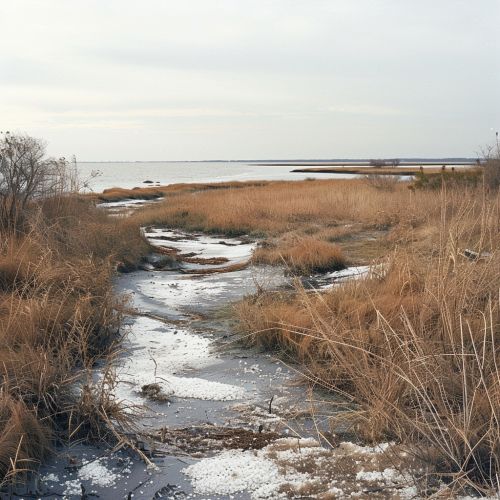Saltwater Intrusion
Introduction
Saltwater intrusion is a hydrological process where saltwater makes its way into freshwater aquifers, which can lead to contamination of drinking water sources and other consequences. This process is becoming increasingly significant due to the rising sea levels associated with climate change.
Causes
Saltwater intrusion can be caused by various factors, both natural and human-induced. The primary natural factor is the rise in sea levels. As sea levels rise, the balance between freshwater and saltwater can be disrupted, leading to the intrusion of saltwater into freshwater aquifers.
Human activities that can contribute to saltwater intrusion include groundwater extraction and land development. Groundwater extraction can lower the water table, reducing the pressure that keeps saltwater at bay and allowing it to intrude into freshwater aquifers. Land development near coastal areas can also contribute to saltwater intrusion by altering the natural flow of water.


Effects
Saltwater intrusion can have several negative impacts, particularly on drinking water sources and agricultural lands. When saltwater intrudes into freshwater aquifers, it can contaminate the water making it unsuitable for drinking or irrigation. This can lead to a shortage of freshwater in affected areas.
In agricultural lands, saltwater intrusion can lead to soil salinization, which can reduce crop yields and even render the land unusable for agriculture. It can also harm freshwater ecosystems, affecting both plant and animal species.
Prevention and Mitigation
There are several strategies that can be used to prevent or mitigate saltwater intrusion. These include managing groundwater extraction to prevent overuse, implementing land use policies that protect aquifers, and restoring natural buffers such as wetlands and mangroves that can help keep saltwater at bay.
In cases where saltwater intrusion has already occurred, strategies such as the installation of desalination plants or the use of alternative water sources may be necessary.
Conclusion
Saltwater intrusion is a significant issue that can have serious impacts on water supplies and ecosystems. It is therefore crucial to manage and mitigate this problem through careful water and land use management, as well as through the use of appropriate technologies where necessary.
